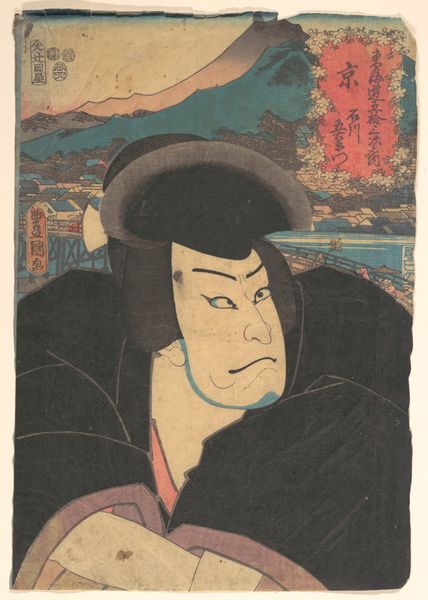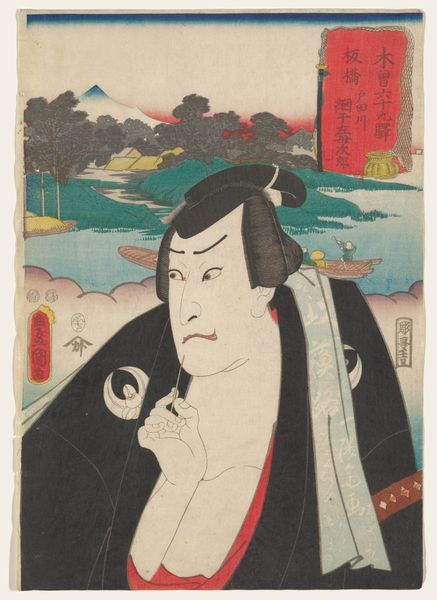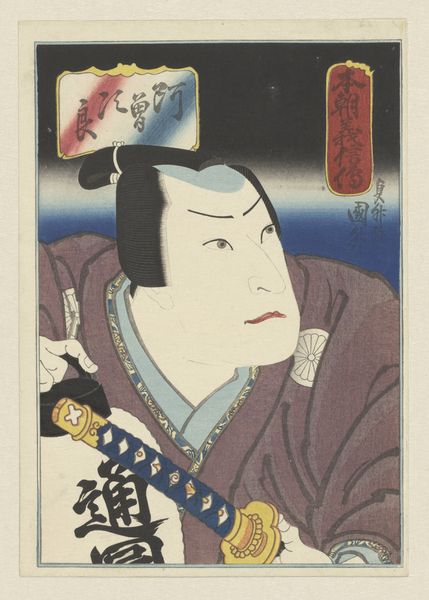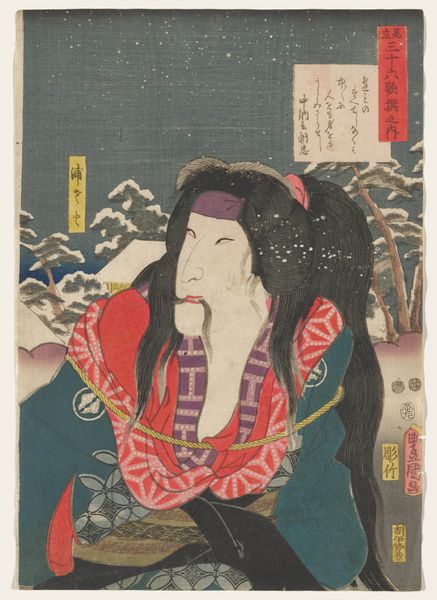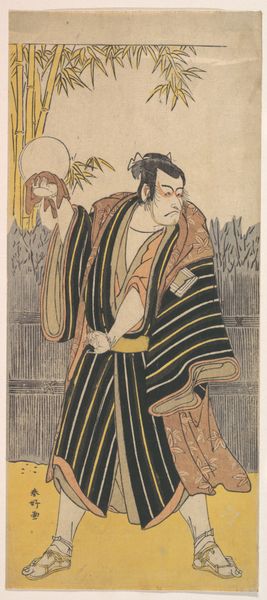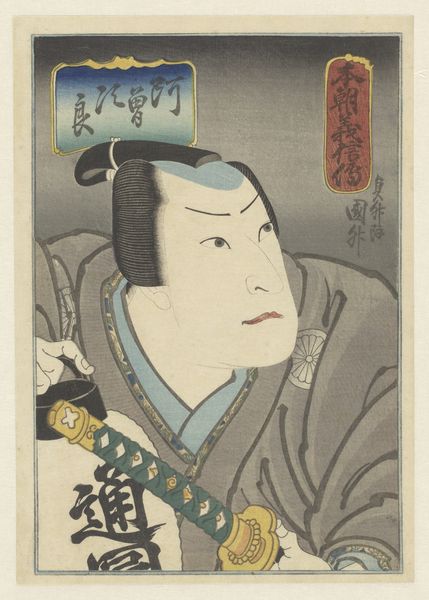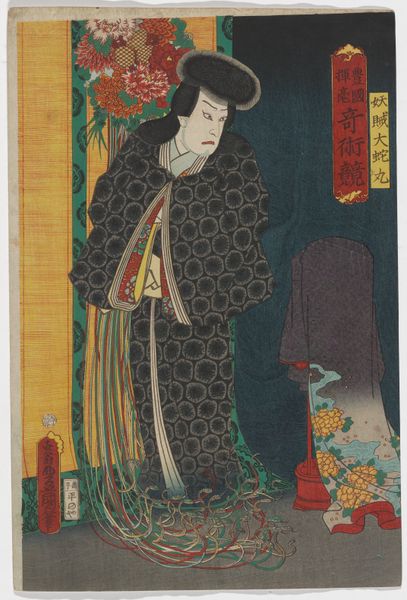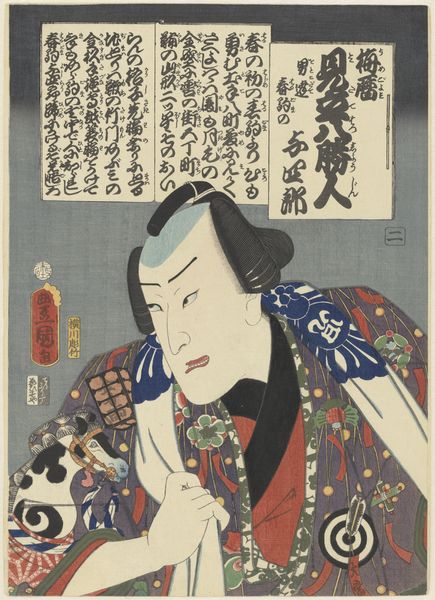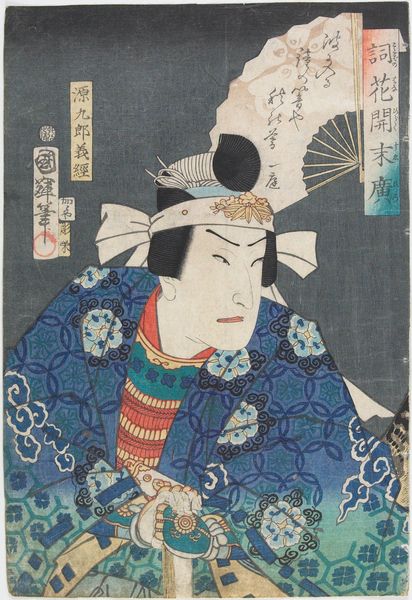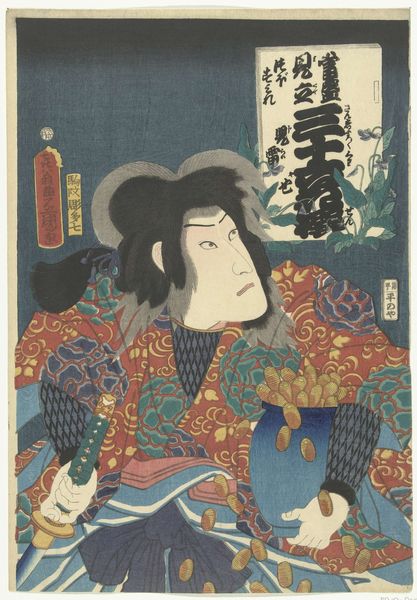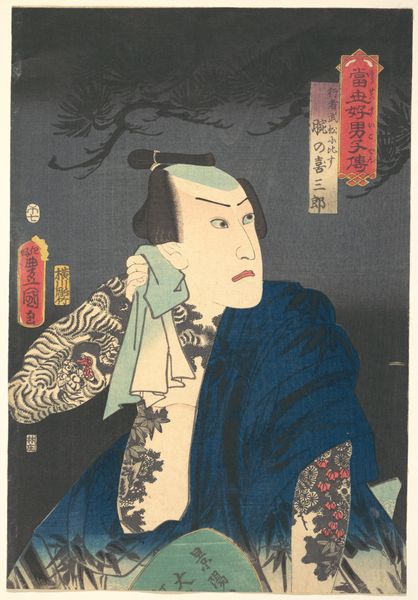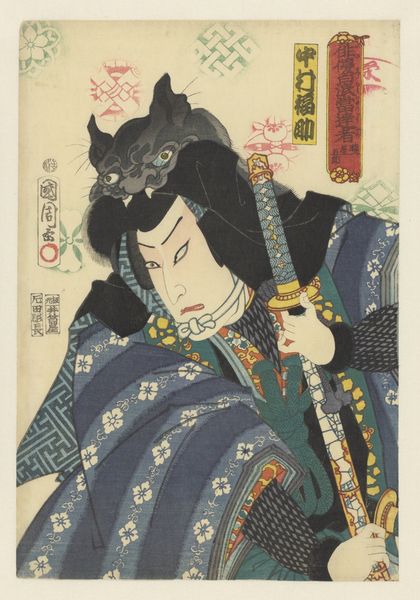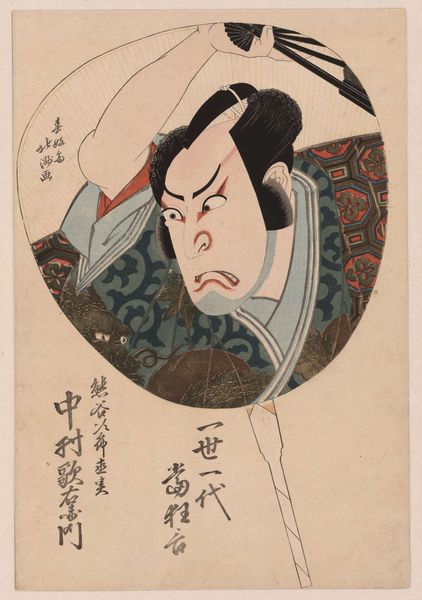![['Hawk, Goemon', 'A collection of birds'] by Utagawa Kunisada](/_next/image?url=https%3A%2F%2Fd2w8kbdekdi1gv.cloudfront.net%2FeyJidWNrZXQiOiAiYXJ0ZXJhLWltYWdlcy1idWNrZXQiLCAia2V5IjogImFydHdvcmtzLzUyMmM1YWViLWVmNTItNDY4Mi04ZGFiLWM4Y2I2NGNiZmM5MC81MjJjNWFlYi1lZjUyLTQ2ODItOGRhYi1jOGNiNjRjYmZjOTBfZnVsbC5qcGciLCAiZWRpdHMiOiB7InJlc2l6ZSI6IHsid2lkdGgiOiAxOTIwLCAiaGVpZ2h0IjogMTkyMCwgImZpdCI6ICJpbnNpZGUifX19&w=3840&q=75)
print, woodblock-print
#
portrait
# print
#
asian-art
#
caricature
#
ukiyo-e
#
figuration
#
woodblock-print
#
genre-painting
Dimensions: height 371 mm, width 258 mm
Copyright: Rijks Museum: Open Domain
Editor: So, this is “Hawk, Goemon” – also known as "A collection of birds"- by Utagawa Kunisada, created sometime between 1860 and 1868. It’s a woodblock print. I’m struck by the very deliberate construction, almost staged feel of the piece. What do you see here? Curator: I'm drawn to the production of this ukiyo-e print. The material realities of woodblock printing – the labour involved in carving the blocks, the specific types of wood used, the pigments chosen and how those materials circulate in the 19th-century economy are important to consider. The texture evident in the print – the grain of the wood perhaps – makes the labour almost palpable. The lines don't lie. What might this materiality reveal about the role of printmaking in society? Editor: That’s interesting! It really makes me consider who had access to these images and what their purpose was in the culture. Were these types of prints mass-produced for popular consumption? Curator: Exactly! Considering the potential for mass production inherent in woodblock printing, what impact would that have had on the perceived value, perhaps, and certainly on the distribution, of images during this period? Is it simply art, or is it commodity? How might examining its materiality help us understand that? Editor: It feels like you're highlighting how the printmaking process itself democratized art, moving away from unique, commissioned paintings toward more accessible images. Curator: Precisely. And what of the paper itself? The types of fibers used, its production - each decision reveals something about access, value, and the cultural landscape in which it was created and circulated. How do those considerations impact how we understand 'high' versus 'low' art? Editor: Thinking about it that way changes my whole perspective on this print. I was so focused on the figure and composition before. Curator: Indeed. The point isn’t only the image, but how its *made*, how those materials and that labour shaped both the image and its context. That's how we can understand its social and cultural meaning.
Comments
No comments
Be the first to comment and join the conversation on the ultimate creative platform.
